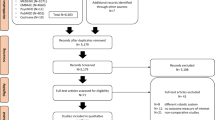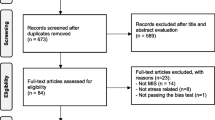Abstract
Robotic surgery is on its way to revolutionizing traditional surgical procedures, offering precise and minimally invasive techniques hypothesized to shorten recovery times and improve patient outcomes. While there have been multiple publications on robotic systems’ medical and procedural achievements, more emphasis should be put on the surgeon’s experience, especially in comparison with laparoscopic surgery. The present report aims to systematically examine the stress impact on surgeons by comparing the robotic Senhance Surgical System (Asensus Surgical, Durham, North Carolina, U.S.A) to laparoscopic surgery. The well-established “SURG-TLX” survey is used to measure distinct stress entities. The “SURG-TLX” survey is a modified version of the NASA-TLX, validated for surgery by M. Willson. Based on a comprehensive database from six centers encompassing various disciplines and surgical procedures, our analysis indicates significantly reduced “overall stress” levels for robotic (cockpit) compared to laparoscopic surgeons. Exploring the “SURG-TLX” stress dimensions further between methods (robotic vs. laparoscopic) and surgeon position (laparoscopic, (robotic) bedside, or (robotic) cockpit) resulted in significantly more Mental (p.value < 0.015), less Physical Demands (p.value < 0.001) and less Distraction (p.value < 0.009) for robotic surgery, especially regarding the robotic cockpit surgeons. This finding suggests that robotic surgery with the Senhance Surgical System contributes to a favorable stress profile for surgeons, potentially enhancing their overall well-being and performance.

Similar content being viewed by others
Data availability
The data used in this research is available upon request. No datasets were generated or analysed during the current study.
References
Muaddi H, Hafid ME, Choi WJ, Lillie E, de Mestral C, Nathens A et al (2021) Clinical outcomes of robotic surgery compared to conventional surgical approaches (laparoscopic or open): a systematic overview of reviews. Ann Surg 273(3):467–473
Wee IJY, Kuo L-J, Ngu JC-Y (2020) A systematic review of the true benefit of robotic surgery: Ergonomics. Int J Med Robot 16(4):e2113
Adams SR, Hacker MR, McKinney JL, Elkadry EA, Rosenblatt PL (2013) Musculoskeletal pain in gynecologic surgeons. J Minim Invasive Gynecol 20(5):656–660
Wohlauer M, Coleman DM, Sheahan MG, Meltzer AJ, Halloran B, Hallbeck S et al (2021) Physical pain and musculoskeletal discomfort in vascular surgeons. J Vasc Surg 73(4):1414–1421
Shugaba A, Subar DA, Slade K, Willett M, Abdel-Aty M, Campbell I et al (2023) Surgical stress: the muscle and cognitive demands of robotic and laparoscopic surgery. Ann Surg Open 4(2):e284
Moore LJ, Wilson MR, Waine E, McGrath JS, Masters RSW, Vine SJ (2015) Robotically assisted laparoscopy benefits surgical performance under stress. J Robot Surg 9(4):277–284
Klein MI, Mouraviev V, Craig C, Salamone L, Plerhoples TA, Wren SM et al (2014) Mental stress experienced by first-year residents and expert surgeons with robotic and laparoscopic surgery interfaces. J Robot Surg 8(2):149–155
Klein MI, Warm JS, Riley MA, Matthews G, Doarn C, Donovan JF et al (2012) Mental workload and stress perceived by novice operators in the laparoscopic and robotic minimally invasive surgical interfaces. J Endourol 26(8):1089–1094
Hurley AM, Kennedy PJ, O’Connor L, Dinan TG, Cryan JF, Boylan G et al (2015) SOS save our surgeons: stress levels reduced by robotic surgery. Gynecol Surg 12(3):197–206
Moore LJ, Wilson MR, McGrath JS, Waine E, Masters RSW, Vine SJ (2015) Surgeons’ display reduced mental effort and workload while performing robotically assisted surgical tasks, when compared to conventional laparoscopy. Surg Endosc 29(9):2553–2560
Stefanidis D, Wang F, Korndorffer JR, Dunne JB, Scott DJ (2010) Robotic assistance improves intracorporeal suturing performance and safety in the operating room while decreasing operator workload. Surg Endosc 24(2):377–382
Singh H, Modi HN, Ranjan S, Dilley JWR, Airantzis D, Yang G-Z et al (2018) Robotic surgery improves technical performance and enhances prefrontal activation during high temporal demand. Ann Biomed Eng 46(10):1621–1636
Zamudio J, Woodward J, Kanji FF, Anger JT, Catchpole K, Cohen TN. (2023) Demands of surgical teams in robotic-assisted surgery: an assessment of intraoperative workload within different surgical specialties. The Am J of Surg. Available from: URL: https://www.sciencedirect.com/science/article/pii/S0002961023002635.
Mazzella A, Casiraghi M, Galetta D, Cara A, Maisonneuve P, Petrella F et al (2023) How much stress does a surgeon endure? the effects of the robotic approach on the autonomic nervous system of a surgeon in the modern era of thoracic surgery. Cancers (Basel) 15:4
Spagnolo E, CristóbalQuevedo I, de Las G, Casas S, López Carrasco A, CarbonellLópez M, PascualMigueláñez I et al (2022) Surgeons’ workload assessment during indocyanine-assisted deep endometriosis surgery using the surgery task load index: the impact of the learning curve. Front Surg. https://doi.org/10.3389/fsurg.2022.982922
McKechnie T, Khamar J, Daniel R, Lee Y, Park L, Doumouras AG et al (2023) The senhance surgical system in colorectal surgery: a systematic review. J Robot Surg 17(2):325–334
Samalavicius NE, Janusonis V, Siaulys R, Jasėnas M, Deduchovas O, Venckus R et al (2020) Robotic surgery using Senhance® robotic platform: single center experience with first 100 cases. J Robot Surg 14(2):371–376
Hart SG, Staveland LE. (1988) Development of NASA-TLX (Task Load Index): Results of Empirical and Theoretical Research. In: Hancock PA, Meshkati N, editors. Advances in Psychology : Human Mental Workload. North-Holland. p. 139–83 Available from: URL: https://www.sciencedirect.com/science/article/pii/S0166411508623869.
Wilson MR, Poolton JM, Malhotra N, Ngo K, Bright E, Masters RSW (2011) Development and validation of a surgical workload measure: the surgery task load index (SURG-TLX). World J Surg 35(9):1961–1969
Thomas A, Murtaza AN, Michael Spiers HV, Zargaran A, Turki M, Mathur J et al (2019) Declining interest in general surgical training - challenging misconceptions and improving access at undergraduate level. Ann Med Surg (Lond) 40:3–8
Bassyouni Z, Elhajj IH (2021) Augmented reality meets artificial intelligence in robotics: a systematic review. Front Robot AI 8:724798
van der Schatte Olivier RH, Van’tHullenaar CDP, Ruurda JP, Broeders IAMJ (2009) Ergonomics, user comfort, and performance in standard and robot-assisted laparoscopic surgery. Surg Endosc 23(6):1365–1371
Wong SW, Crowe P (2022) Factors affecting the learning curve in robotic colorectal surgery. J Robot Surg 16(6):1249–1256
Azadi S, Green IC, Arnold A, Truong M, Potts J, Martino MA. (2021) Robotic Surgery: The Impact of Simulation and Other Innovative Platforms on Performance and Training. Journal of Minimally Invasive Gynecology; 28(3):490–5. Available from: URL: https://www.sciencedirect.com/science/article/pii/S1553465020311687
Acknowledgements
We want to acknowledge the support of our industry partner, Asensus Surgical US, in providing logistics for the data collection and analysis presented here.
Funding
The authors declare that no funds, grants, or other support were received during the preparation of this manuscript.
Author information
Authors and Affiliations
Contributions
All authors, performed surgery and filled out the Surg TLX questionnaire after surgery, either robotic or laparoscopic. V. M. wrote the main manuscript text. The analysis was performed by the senior statiscian, CRO Dr Tanja Kottmann, who is not in the author list, nor in the acknowledgements, since she works for the industry partner Asensus. The figures are made by V.M., with the help of Dr. Tanja Kottmann. All authors reviewed the manuscript.
Corresponding author
Ethics declarations
Conflict of interest
The authors declare no conflict of interest.
Additional information
Publisher's Note
Springer Nature remains neutral with regard to jurisdictional claims in published maps and institutional affiliations.
Supplementary Information
Below is the link to the electronic supplementary material.
Rights and permissions
Springer Nature or its licensor (e.g. a society or other partner) holds exclusive rights to this article under a publishing agreement with the author(s) or other rightsholder(s); author self-archiving of the accepted manuscript version of this article is solely governed by the terms of such publishing agreement and applicable law.
About this article
Cite this article
Menke, V., Hansen, O., Schmidt, J. et al. The stress for surgeons: exploring stress entities with the robotic senhance surgical system. J Robotic Surg 18, 94 (2024). https://doi.org/10.1007/s11701-024-01853-6
Received:
Accepted:
Published:
DOI: https://doi.org/10.1007/s11701-024-01853-6




